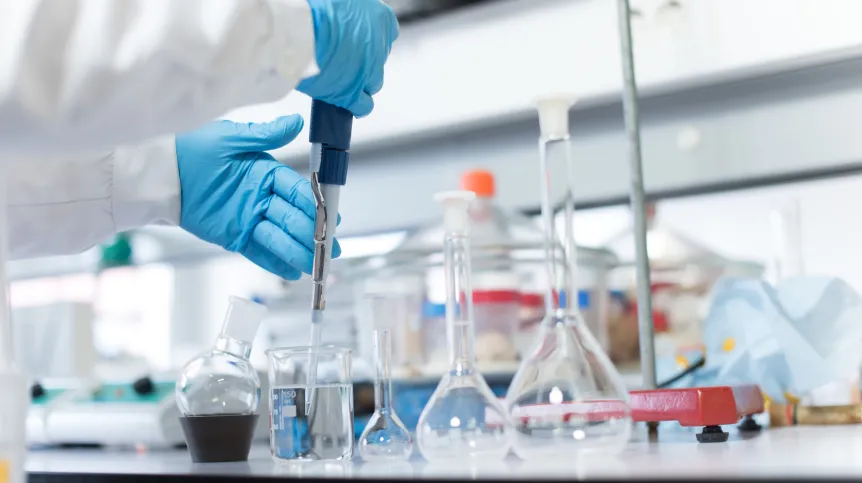
An international team of scientists, including several Polish researchers, has developed a breakthrough method for studying chemical reactions that could transform laboratory research worldwide.
The results, published in Nature, describe a low-cost robotic platform powered by artificial intelligence that can analyse thousands of reactions in just hours, mapping their full complexity with unprecedented detail.
The research was conducted at the Institute for Basic Science (IBS) in Ulsan, South Korea, by a team led by Professor Bartosz Grzybowski, head of the Center for Algorithmic and Robotic Synthesis, with participation from Rafał Frydrych and Daniel Matuszczyk.
“Chemical reactions involve combining certain substrates and obtaining a product,” explained Rafał Frydrych in an interview with the Polish Press Agency (PAP). “But the result also depends on factors like temperature, pressure, and catalysts. Testing all possible combinations manually would take years. Our system can do it in just a few hours.”
The new robotic platform performs hundreds of reactions simultaneously in miniature test tubes, each representing a different set of conditions. Together, these experiments create a detailed map of the reaction’s behaviour - what the scientists call a “reaction hyperspace.”
“We have shown that reactions don’t happen linearly, as in A + B = C,” Frydrych said. “They form an entire network of connections, and with our method, any chemist can navigate between them simply by changing the initial conditions.”
Traditional analysis techniques such as magnetic resonance spectroscopy or liquid chromatography are accurate but slow and costly. The IBS team replaced them with rapid optical measurements.
Each reaction is analysed through UV-Vis spectroscopy, and AI algorithms determine what products were formed and in what quantities.
“These optical methods are inexpensive and fast,” Frydrych said. “The algorithm even tells us whether our knowledge of the reaction space is complete.”
Using this approach, the team revisited well-known chemical reactions and uncovered hidden complexity.
In the classic Hantzsch reaction, used for more than 150 years to synthesise pyridine compounds, the system revealed nine previously unknown products and intermediates.
By simply changing substrate proportions, researchers were able to “switch” the reaction network to yield three different main products—each with over 60% efficiency and without adding new reagents.
Further experiments showed that transitions between products in multicomponent reactions are gradual rather than abrupt, meaning chemists can study only part of the hyperspace and let algorithms fill in the rest—saving time and resources.
In catalyst studies, small compositional changes produced complex efficiency maps with many local maxima, demonstrating how catalysts reshape reaction pathways.
“This shows that reactions involving catalyst variation have a completely different character,” Frydrych explained. “We’re influencing activation barriers, so the efficiency landscape becomes much more complex.”
The team likens their approach to electronics: by analysing inputs and outputs, they can reconstruct the internal connections of a chemical system. “Instead of a single arrow from substrate to product, we get a whole network of reactions that can be controlled,” Frydrych said.
Beyond theory, the technology offers practical environmental and industrial benefits. Reaction maps enable energy and material savings and allow the production of multiple useful compounds—from pharmaceuticals to dyes and electronic materials—using the same set of starting chemicals.
In a commitment to open science, the researchers have released the full platform design and software as open access, allowing any laboratory to build its own version. “We designed it from scratch with low cost in mind,” Frydrych said. “Any research team in the world can replicate it and run up to a thousand reactions a day.”
“This tool is designed to make chemists’ work easier,” he added. “They can see where different products are, how to achieve them, and describe the space mathematically. The data are consistent and suitable for machine learning.”
The researchers add that their method will accelerate reaction discovery, improve reproducibility, and integrate artificial intelligence more deeply into experimental chemistry. (PAP)
PAP - Science in Poland, Katarzyna Czechowicz
kap/ zan/ lm/
tr. RL













